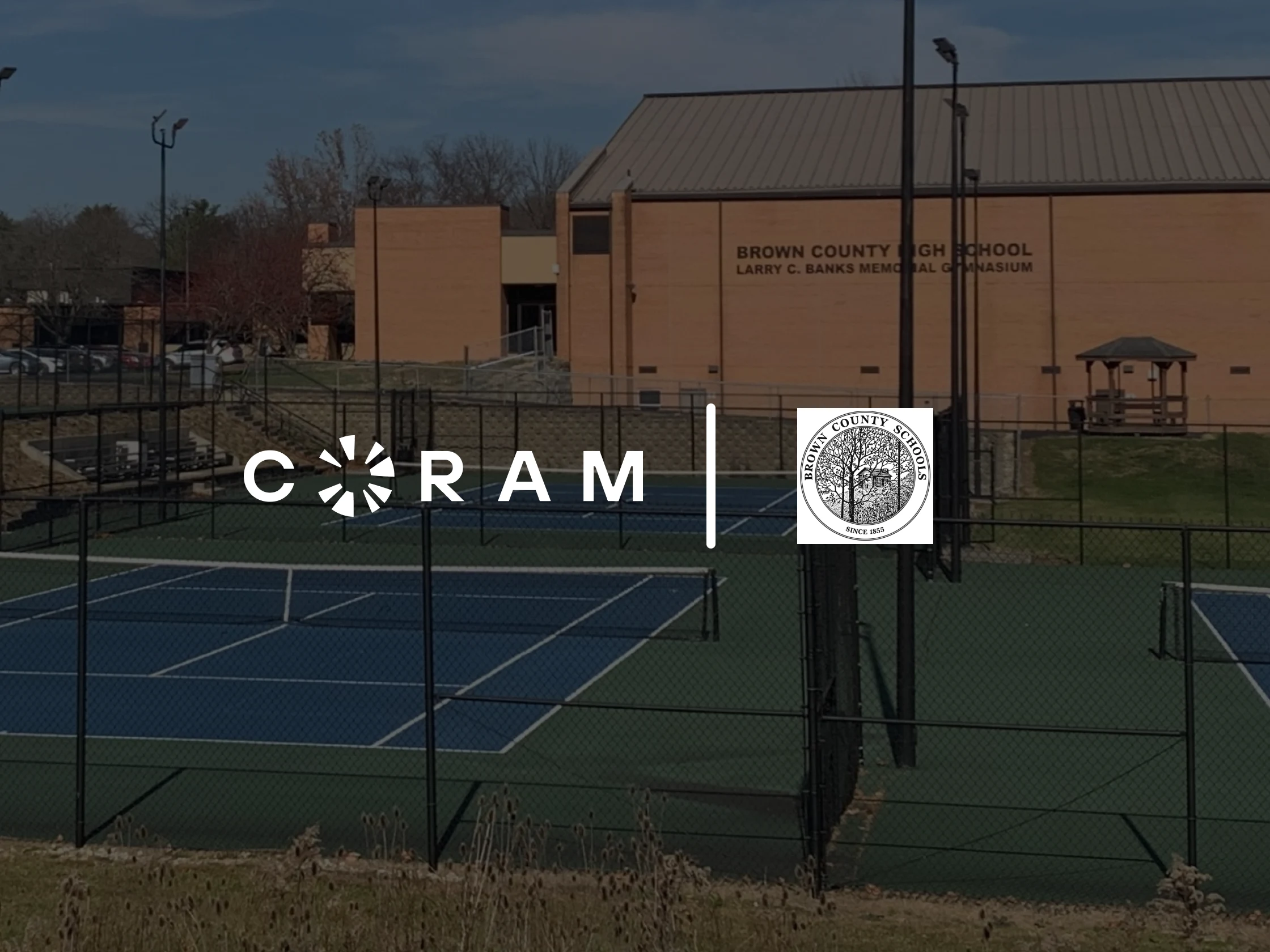Canadian schools are facing both digital and physical threats. Alarmingly, cybercrime in Canada is projected to quadruple between 2021 and 2025, showing how school administrative systems are at growing risk. In late December 2024, the PowerSchool platform suffered a ransomware breach affecting more than 80 school boards across seven provinces and one territory.
This incident compromised more than 2.4 million student records across Canada. Meanwhile, the past year saw disturbing real-world incidents, including a series of three shootings at a Toronto girls’ elementary school.
With vulnerable digital systems and rising physical threats, Canadian schools urgently need comprehensive, proactive security strategies to protect their communities. This article explores compliant strategies that transform Canadian schools into safe havens for learning.
Key Threats Facing Canadian Schools
Canadian schools confront growing physical, cyber, and environmental vulnerabilities, including lockdowns, vaping hazards, and cyberattacks targeting student data. Recent incidents, like weapon discoveries and ransomware breaches, highlight urgent risks to safety and operations. However, understanding these threats is the key first step toward proactive protection.
Targeted Physical Attacks and Harassment
Once rare, incidents like the repeated shootings at Toronto’s Bais Chaya Mushka school in 2024 show that religiously targeted attacks and hate-driven vandalism are rising.
Additionally, threats made online (from teens posting about “shooting up” schools in Ontario to threat calls) have triggered lockdowns and trauma, even when no weapon or device was found. The psychological toll is significant, even if no physical harm occurs.
Cloud Misconfigurations and Unpatched Systems
Outdated software and poor cloud security configurations facilitate ransomware attacks. For example, the University of Winnipeg breach originated from unpatched systems, compromising 20 years of employee and student records and forcing system shutdowns. IoT and cloud misconfigurations are still among the most common entry points for attackers.
Third-Party and Supply Chain Vulnerabilities
Schools are prime targets for cyber attacks due to the vast amounts of sensitive student and staff data they hold. With more Canadian schools relying on cloud-based platforms for education and administration, the risk of cyberattacks has surged.
Ransomware attacks can cripple operations, while data breaches can expose personal information, leading to identity theft and reputational damage. Hackers target student records, staff credentials, and sensitive operational data.
For example, the PowerSchool attack exposed decades of sensitive data (birthdates, health cards, bank details) due to lax vendor protocols and delayed breach disclosures. These ransomware attacks and phishing schemes have made headlines, leaving schools scrambling to restore systems and protect privacy.
Violence and Intrusions
The most acute fear remains acts of violence, including potential armed intruders, physical assaults, or severe bullying escalating to harm.
Unauthorized trespassers present a constant underlying threat, requiring vigilant perimeter and access control. Incidents, though statistically rare, have profound impacts and necessitate prevention and rapid response protocols.
Vaping, Substance Use, and Air Quality Hazards
Despite regulations, vaping persists as a significant health and disciplinary issue, often concentrated in bathrooms and secluded areas. Nearly a quarter (23.6 %) of Grade 10–12 students reported vaping in the past 30 days, and 11.8 % do so daily.
When we broaden to Grades 7–12, about 17 % report using vaping products, showing the issue affects even younger teens. Beyond nicotine, concerns include illicit substances and the potential for tampering with vaping devices, causing fires, or exposing students to harmful chemicals.
Poor indoor air quality (from CO2 buildup, particulates, or VOCs) also impacts health and learning.
Vandalism, Theft, and After-Hours Risks
Damage to property (broken windows, equipment destruction) and theft of valuable technology (laptops, tablets, AV gear) drain resources and create an environment of neglect.
Schools are vulnerable targets during evenings, weekends, and holidays for break-ins, arson, or squatting.
Natural Disasters and Environmental Hazards
Depending on location, schools face risks from wildfires (smoke), floods, extreme weather events, and infrastructure failures (such as gas leaks, electrical fires).
However, effective emergency plans covering situational awareness, evacuation, shelter-in-place, and communication are non-negotiable.
Top Security Solutions for Canadian Schools in 2025
Modern security integrates AI surveillance, access controls, and vape detection with privacy-compliant emergency systems. These layered solutions deter threats, enable rapid response, and align with provincial guidelines. Here’s how technology and strategy unite to create safer, trusted learning environments.
- AI-Powered Surveillance Cameras
Modern systems integrate advanced AI video analytics that detect weapons, suspicious behavior (such as loitering or crowd surges), falls, or spills, around the clock. Crucially, they can identify objects of concern faster than human operators, triggering immediate alerts to security personnel while filtering out false positives from normal activity.
This enhances efficiency and privacy. By choosing American-made systems, Canadian schools can avoid legal complications and possible hidden vulnerabilities linked with Chinese-based providers.
- Access Control Systems
Gone are the days of easily copied keys. Robust electronic access control manages entry points with keycards, fobs, or biometrics. Systems can:
- Restrict access to specific areas (such as staff rooms, labs) based on time and user credentials
- Automatically lock exterior doors after entry periods
- Provide a detailed audit trail of movement
Integration with other security systems allows immediate lockdowns during emergencies with a single command. This layered approach ensures that access is not only restricted but also continuously monitored.
- Vape Detection & Air Monitoring
Addressing health and safety concerns, discreet sensors installed in washrooms and other hotspots detect vaping and smoking by identifying specific chemicals and particulate matter. For instance, Summerland Secondary School introduced vape detectors in washrooms, which reduced vaping incidents in weeks.
These systems send real-time alerts, enabling quick staff intervention. Advanced models also monitor air quality for CO2, particulate matter, or volatile organic compounds (VOCs), contributing to a healthier overall environment.
- Emergency Response Integration
Modern platforms incorporate surveillance, access control, fire alarms, and mass notification tools. During a crisis (lockdown, fire, medical emergency), triggering one system can automatically activate others.
This can translate into locking doors, broadcasting alerts, and notifying first responders with critical live information (camera feeds, location data).
- After-Hours Monitoring & Remote Access
Security doesn't end when the school day ends. Cloud-based security solutions allow for remote monitoring; they watch for intrusions, fires, natural disasters, or environmental hazards overnight and on weekends.
Authorized personnel can also remotely view cameras, manage access points (for example, granting entry to cleaning staff), or receive system alerts via secure mobile apps. This ensures constant oversight and rapid response capability.
Provincial & National Safety Guidelines
Implementing effective security solutions is fundamentally about compliance within a complex web of provincial mandates and national privacy principles. Understanding and adhering to these guidelines is paramount for both legal operation and genuine student safety.
Provincial School Safety Standards
Ontario: While Canada lacks a single federal school safety act, provinces establish robust frameworks. Ontario's foundational Education Act and Safe Schools Act (alongside specific Policy/Program Memoranda like PPM 128) mandate:
- Threat assessment protocols
- Emergency plans (including lockdowns)
- Staff training
- Codes of conduct
British Columbia: British Columbia implements the ERASE (Expect Respect & A Safe Education) Strategy, a province-wide initiative that provides a comprehensive approach and emphasizes:
- Bullying and violence prevention (including cyberbullying)
- Mental health support
- Mandatory incident reporting systems
Generally, it equips educators with resources to address racism, gender-based violence, and cyberbullying.
Alberta: Alberta focuses on building welcoming, caring, respectful, and safe learning environments through policies guided by the Education Act. It also stresses emergency preparedness, mental health support, and collaboration with law enforcement and community partners.
How Schools Can Meet Local Policies ?
To meet these provincial requirements, schools need to go beyond reactive security measures. This includes:
Policy Mapping: Regularly review provincial legislation, ministry directives, and board policies. Ensure your security solutions (for example, access control, AI surveillance usage, vape sensor alerts) directly support mandatory requirements such as:
- Visitor management
- Incident documentation
- Rapid threat response
VTRA Integration: Security systems must feed into and support provincial Violence Threat Risk Assessment models. Access data and camera footage (used appropriately) can be critical in assessing and mitigating threats.
ERASE and Climate Focus: In BC, solutions such as anonymous reporting devices and digital monitoring must align with ERASE's goals of facilitating respectful environments, not just surveillance. Also, training on tools should include recognizing bullying and harassment signals.
Plan Testing and Updating: Emergency plans required provincially must be regularly tested and updated, with security technology (integrated PA, door locks, mass notification) playing a key role in execution.
Overall, to meet local policies, schools must:
- Train staff in behavioral threat assessments
- Implement access control systems
- Conduct regular lockdown drills
- Create clear communication channels for emergencies
Investing in visitor management software, surveillance systems, and staff/student ID protocols also supports compliance and safety.
Importance of Data Privacy and Student Rights in Canadian Law
Privacy is non-negotiable in Canada. Therefore, security measures must operate within strict privacy laws:
PIPEDA and Provincial Laws: The Personal Information Protection and Electronic Documents Act (PIPEDA) and provincial equivalents (like BC's FIPPA, Ontario's MFIPPA) govern the:
- Collection
- Use
- Disclosure of personal information, including images and biometric data
Balancing Act: Deploying AI cameras, access control systems, or vape detectors requires careful consideration. As a result, schools must have a clear purpose, limited data collection, secure storage, defined retention periods, and transparency with the school community. This is because students' rights to privacy within reasonable limits are paramount.
Consent and Transparency: Schools must clearly communicate what data is collected, why, how it is used/stored, and who has access, especially concerning minors. Parental consultation is often crucial.
How Coram is the Right Security Vendor in Canada?
Regarding Canadian schools' security, Coram stands out as a trusted, future-focused security system with deep experience in the education sector. It offers a full suite of customized solutions designed to meet your school’s unique safety and compliance needs.
- First, Coram understands the Canadian education system. From K–12 to post-secondary institutions, school environments vary widely in size, layout, and risk exposure. Coram works closely with school boards and facilities managers to design customized systems that meet provincial safety standards and align with budget priorities. You get all these without compromising on effectiveness.
- What truly sets Coram apart is its integrated approach to school security. Rather than offering piecemeal solutions, Coram provides a seamless combination of AI-powered surveillance cameras, access control systems, vape detection, and emergency response integrations. All these are managed from a single, intuitive platform. This allows IT departments and safety teams to monitor, detect, and respond to incidents in real-time, from anywhere.
- Schools partnering with Coram also benefit from advanced remote access and after-hours monitoring. This is particularly essential for preventing break-ins, vandalism, or unauthorized access after school hours. Additionally, Coram’s cloud-based tools ensure that key decision-makers are notified instantly of any suspicious activity, helping prevent incidents before they escalate.
- In a time where cybersecurity is just as important as physical safety, Coram’s systems are built with data protection and network security in mind. This supports IT managers in keeping student and staff data safe while minimizing system vulnerabilities.
- Most importantly, Coram doesn’t just install and walk away. Their support team is responsive, knowledgeable, and committed to long-term partnerships with schools. They provide ongoing system updates, compliance checks, and staff training to ensure your safety measures remain effective and up-to-date.
Therefore, if your goal is to create a secure, modern, and responsive learning environment, Coram is a security partner you can trust.
Final Thought
As safety challenges grow, Canadian schools must stay ahead with proactive, tech-driven security solutions. From preventing intrusions to monitoring air quality and enabling rapid emergency response, it’s clear that a one-size-fits-all approach no longer works.
However, Coram bridges this gap. With a deep understanding of school safety needs and a commitment to innovation, Coram delivers integrated, reliable, and scalable systems built for Canadian institutions.
Ready to upgrade your school’s security strategy? Book a free security assessment with Coram today and uncover the security gaps you didn’t know existed.





.webp)








.webp)
